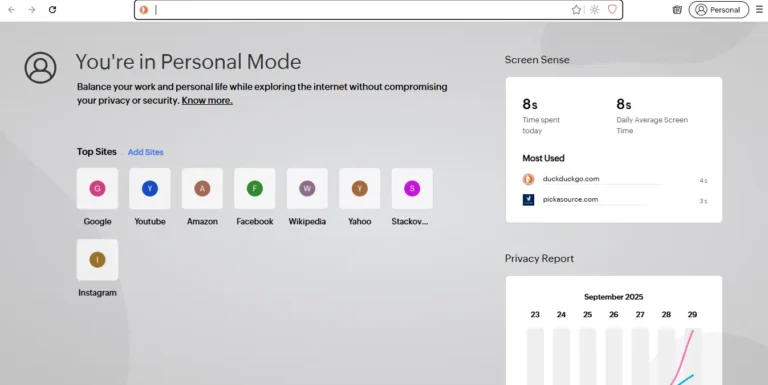How to Optimize Your Blog Based on Competitors

In SEO, understanding and leveraging competitor strategies can significantly elevate your blog’s performance. Competitor analysis isn’t just about keeping up; it’s about outpacing your rivals by learning from their successes and shortcomings.
Key Takeaways
By strategically optimizing your blog based on competitor insights, you can
- Refine your content
- Boost your SEO
- Enhance user engagement
This comprehensive guide will walk you through the process of analyzing your competitors and implementing effective strategies to optimize your blog.
Understanding the Importance of Competitor Analysis
Competitor analysis is a vital part of digital marketing that involves studying your competitors to uncover their strengths and weaknesses.
This process is crucial for several reasons.
Firstly, it helps you understand the strategies that work well in your niche
For instance, if you run a blog on sustainable fashion, observing how top competitors address topics like eco-friendly materials or ethical brands can offer valuable insights into successful content strategies.
Secondly, analyzing competitors allows you to identify content gaps—areas where they may have overlooked opportunities.
For example, if your competitors’ articles on sustainable fashion mostly focus on clothing brands but lack content on eco-friendly fashion accessories, this represents a potential content gap that you can fill to attract more readers.
Lastly, competitor analysis aids in benchmarking your performance. By comparing your metrics with those of leading blogs, you can set realistic goals and identify areas for improvement.
For instance, if your competitors consistently achieve higher engagement rates, analyzing their content can reveal the factors contributing to their success, allowing you to implement similar strategies.
Step-by-Step Guide to Competitor Analysis
1. Identifying Your Competitors
The first step in optimizing your blog based on competitors is identifying who they are.
Start by pinpointing blogs that rank highly for keywords relevant to your niche. Tools like Ahrefs, SEMrush, and Moz can help you discover these competitors by analyzing search engine rankings and domain authority.
For example, if you run a travel blog focused on budget destinations, your competitors might include blogs that frequently feature low-cost travel tips or destination guides. Tools like SEMrush can reveal which sites are ranking for terms like “cheap travel tips” or “budget travel destinations.”
Once identified, categorize your competitors based on their content focus, audience size, and engagement metrics.
This will help you prioritize which competitors to analyze in-depth and understand their influence within your niche.
2. Analyzing Content Strategies
With your list of competitors in hand, delve into their content strategies.
Start by examining the type of content they produce. Are they focusing on listicles, in-depth guides, personal stories, or visual content like infographics?
For instance, if a competitor’s blog on “Adventure Travel” consistently features engaging listicles such as “Top 10 Hiking Trails in North America,” you might consider creating similar list-based content but with a unique twist—perhaps focusing on lesser-known trails or incorporating user-generated content.
Additionally, evaluate the frequency and consistency of their posts. Regular posting schedules can indicate a commitment to maintaining audience interest. If a competitor publishes new content every week, ensure you match or exceed this frequency to stay relevant.
3. Evaluating Keyword Use
Keywords are a fundamental aspect of SEO.
Analyzing how competitors use keywords can offer valuable insights into effective strategies. Tools like Ahrefs and SEMrush allow you to explore the keywords your competitors are targeting and how well they rank for them.
For example, if a competitor’s blog on “Healthy Eating” ranks well for keywords like “nutrient-dense foods” and “meal prep ideas,” these keywords should be part of your analysis. Look for both primary and secondary keywords they target, and assess how these terms are integrated into their content.
Incorporate these insights into your blog by focusing on similar keywords but with your unique angle. If your competitor has covered “meal prep ideas,” you might explore “creative meal prep solutions for busy professionals” or “budget-friendly meal prep tips.”
4. Examining Backlink Profiles
Backlinks play a crucial role in SEO by signaling to search engines that your content is valuable and trustworthy.
Analyzing your competitors’ backlink profiles can provide insights into where they’re getting their links and how you can build your own.
Use tools like Ahrefs or Moz to analyze the backlink profiles of your competitors. Identify high-quality sources linking to their content and consider reaching out to these sites for similar opportunities.
For example, if a competitor’s blog on “Digital Marketing Trends” has backlinks from reputable industry websites, you might pitch a guest post or collaborate with these same sites.
Building backlinks from high-authority sources not only enhances your blog’s credibility but also drives more referral traffic. Focus on creating content that is valuable and relevant to the audiences of these backlink sources to increase your chances of earning links.
5. Assessing Content Quality and Format
Content quality and format significantly impact user engagement and SEO.
Examine how your competitors structure their posts, the depth of information they provide, and the overall readability of their content.
For instance, if a competitor’s blog on “Travel Photography Tips” uses visually appealing images and detailed guides, consider adopting a similar approach. Create comprehensive guides that include high-quality images, step-by-step instructions, and practical tips.
If your competitor’s posts are heavily image-based, ensure that your content is equally or more visually engaging to capture readers’ attention.
Additionally, assess the readability of your competitors’ content. Well-structured articles with clear headings, subheadings, and bullet points are easier to read and more likely to keep users engaged.
Implement these formatting techniques to enhance the readability of your own blog.
6. Identifying Content Gaps
Content gaps are opportunities to address topics or questions that your competitors haven’t covered or have only superficially addressed.
Use tools like BuzzSumo to identify trending topics and analyze your competitors’ content to find gaps.
For example, if no competitor has extensively covered “Eco-Friendly Travel Accessories,” this represents a content gap you can exploit. Create an in-depth post on this topic, including reviews, recommendations, and practical tips.
This unique angle can attract readers who are looking for specific information that others haven’t provided.
Implementing Competitor-Inspired Strategies
With insights from your competitor analysis, it’s time to implement strategies to optimize your blog. Start by incorporating high-performing keywords into your content, ensuring they are naturally integrated. Focus on creating high-quality, unique content that offers value beyond what your competitors provide.
For instance, if your competitor’s blog on “Fitness Routines” includes basic workout plans, consider creating a comprehensive guide with advanced routines, personal success stories, and expert interviews. This added depth can differentiate your content and attract a broader audience.
Enhance your posts with rich media such as images, videos, and infographics.
For example, if a competitor’s article on “Healthy Recipes” includes basic images, you might create visually stunning infographics that summarize recipes or highlight key nutritional information. This approach can make your content more engaging and shareable.
Furthermore, build relationships with reputable sites for backlink opportunities. Reach out to the same publications or websites that link to your competitors and pitch high-quality content or guest posts. This strategy will help improve your blog’s authority and visibility.
You can check our complete SEO Checklist to understand better and to win competitors. Also you look our ranking strategies blog to dominate the search results
Actionable Takeaways
- Regularly monitor and analyze your competitors to stay updated on their strategies.
- Create high-quality, unique content that fills identified content gaps and addresses audience needs.
- Optimize your posts with relevant keywords and incorporate rich media to enhance engagement.
- Build relationships with reputable sites for backlink opportunities to boost your blog’s authority.
By strategically analyzing and implementing insights from your competitors, you can significantly enhance your blog’s performance.
Remember, the goal is not to copy but to learn and adapt these strategies to fit your unique voice and audience.

With 5+ years of SEO experience, I’m passionate about helping others boost their online presence. I share actionable SEO tips for everyone—from beginners to experts.





